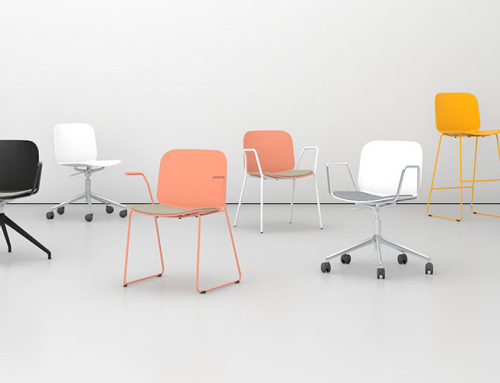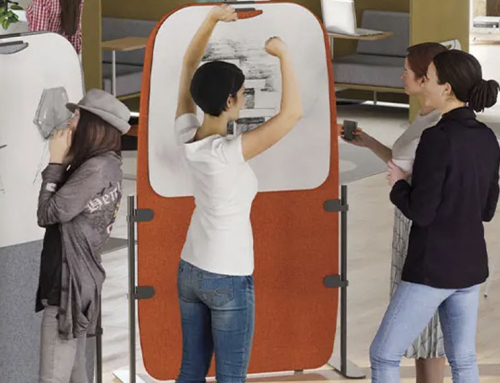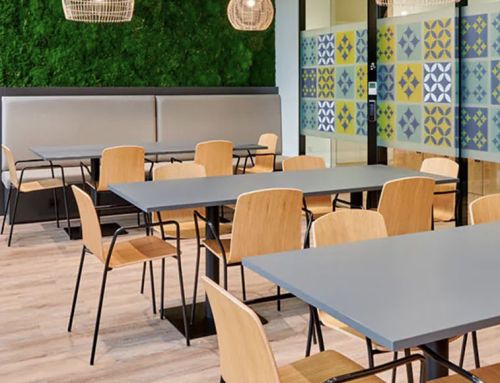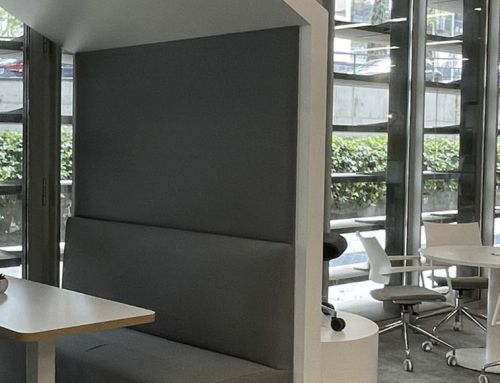Office design will soon have little to do with the space we knew. Companies are redesigning their offices, opting for optimized spaces that are friendlier and more fun, and much more flexible, in line with the new reality of work.
The office of the future will be a space where you want to go, and not where you have to go. A space where you feel comfortable, motivated and at ease.
The office gives us that community and sense of belonging that we have lost with teleworking and that in the current uncertain situation we need so much for our emotional balance.
The new work environments also include spaces where functions can be carried out that are not carried out effectively at home. This is the case, for example, of the concentration spaces or the most creative areas for innovation and/or Agile methodologies.
These new spaces for innovation are changing the image of offices. The traditional concept of a workstation, with a table, file cabinet and chair, the one in which we spend the entire working day sitting, is giving way to totally different spaces: mobile tables and whiteboards, bleachers, furniture for standing work… Much more casual .
The design of the office, trends
There are 5 big trends that are changing office design:
Trend 1. The hybrid office – Non-territorial and collaborative
With a hybrid work model, the office looks more and more like a coworking, that is, it ceases to be a fixed place assigned to a person to carry out a specific task and becomes a space for co-creation and relationships between colleagues.
In the new offices, spaces for teamwork and interpersonal relationships that will be versatile and polyvalent are key.
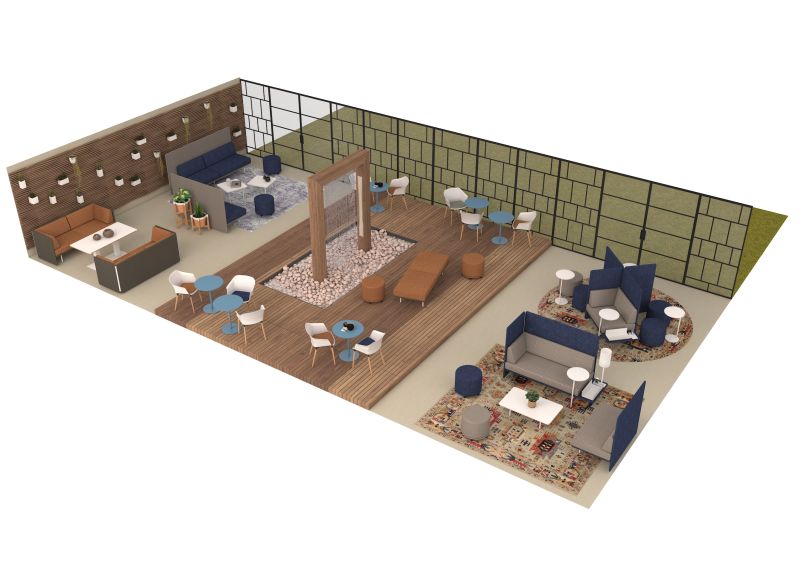
Trend 2. A pool with 12 spaces
The elimination of the jobs assigned to each worker is increasingly reinvested in an increase in collaborative spaces, leisure and relaxation areas and alternative spaces for work and communication.
Workers choose the workspace that best suits their current needs in this new office design.
According to Ofita’s latest ebook, “3×4=12 – La new workspaces formula”, the new offices have 12 spaces for workers and different activities.
This study differentiates between red, blue and orange areas. The first ones are the zones for the noisiest activities. Red areas are for meetings and collaboration, there would be 4: the Plaza, the multifunctional room, the meeting rooms and the teamwork rooms.
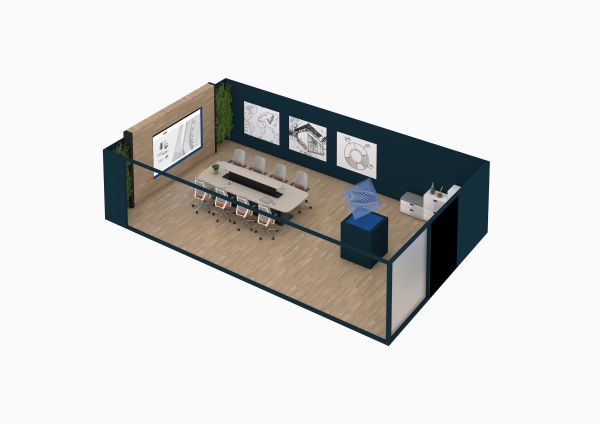
Sala de reunión
The blue areas are for the most concentrated work: the workstations, the library, the cabins and the wellness room.
Acoustic booths are increasingly present in new office design, and not only for safety, but because they allow the creation of different functional ecosystems within an open space (meetings, concentration…) and in this way each activity can be carried out with the maximum efficiency.
Finally, the orange areas are 4 spaces that serve as transit between some activities and others: the reception, the Park, the Boulevard and the soft seating areas. They encourage more spontaneous collaboration.
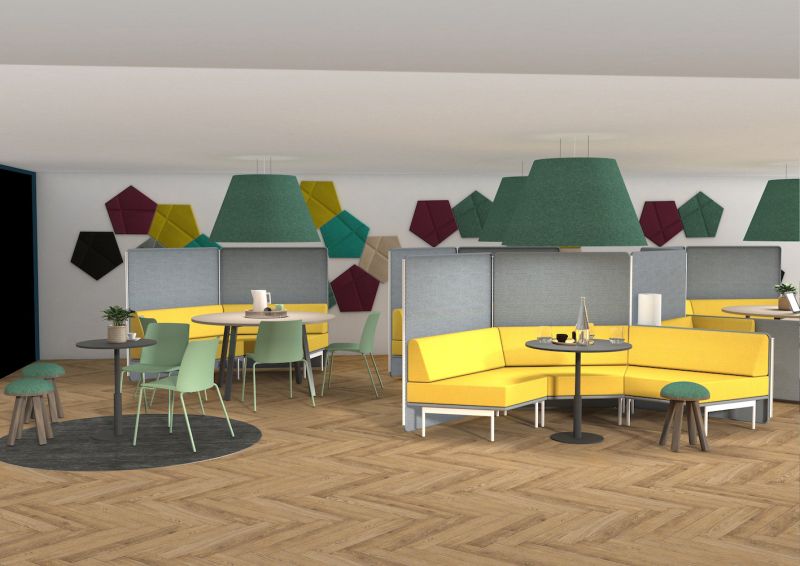
Área soft seating
Trend 3. Humanization of offices – People come first.
Since the beginning of the pandemic, at all times, the priority has always been the protection of employees. Therefore, companies adapted the office environment to keep their employees safe at all times. Today the accent is also placed on your well-being.
The wellness policies that companies are implementing are increasingly accompanied by a work space designed to take care of people, both physically and emotionally.
On the other hand, biophilia or connection with nature within the workspace is one of the options that is growing the most in the design of the current office. Natural elements in the interior such as patios, gardens or plants are increasingly occupying a relevant position in companies, and not only as an aesthetic detail. The patios and gardens are functional spaces where to interact, meet and work.
Trend 4. The rise of informal spaces
Workspaces are increasingly diverse and informal. Coffee shops, libraries, lounge areas or recreational spaces often replace traditional meeting rooms, with the aim of offering more comfortable spaces to their staff and at the same time promoting spontaneous collaboration and socialization.
Generally, they are much more welcoming and fun design spaces, and these are important because the environment influences us and greatly in our motivation and the productivity of our daily work.
In addition to having a nice and beautiful design, these informal spaces must also be productive. For this reason, they are usually equipped with the same services as a conventional workplace, mainly access to communications, energy and technology, as well as having surfaces designed to work.
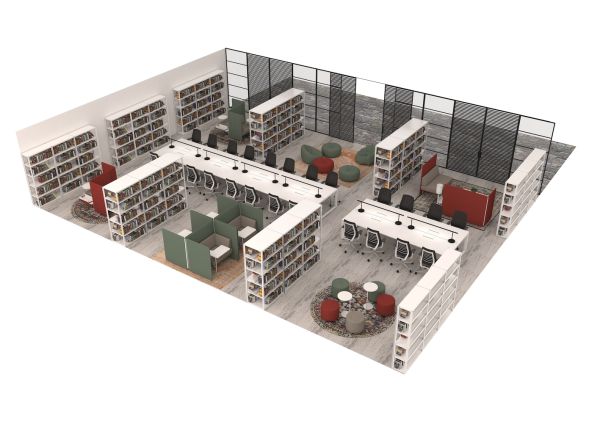
Biblioteca
Trend 5. Creating a brand from the office
With staff alternating telework and face-to-face activity, the office has become the only possible setting to create a sense of community in workers and to connect employees with the company’s culture, brand and values.
One of the new roles of the office is therefore to transmit the corporate brand to the organization’s own employees and abroad. The office tells us if everything a company says is true: if it takes care of its people; whether your culture is horizontal or vertical; How is their leadership style…

